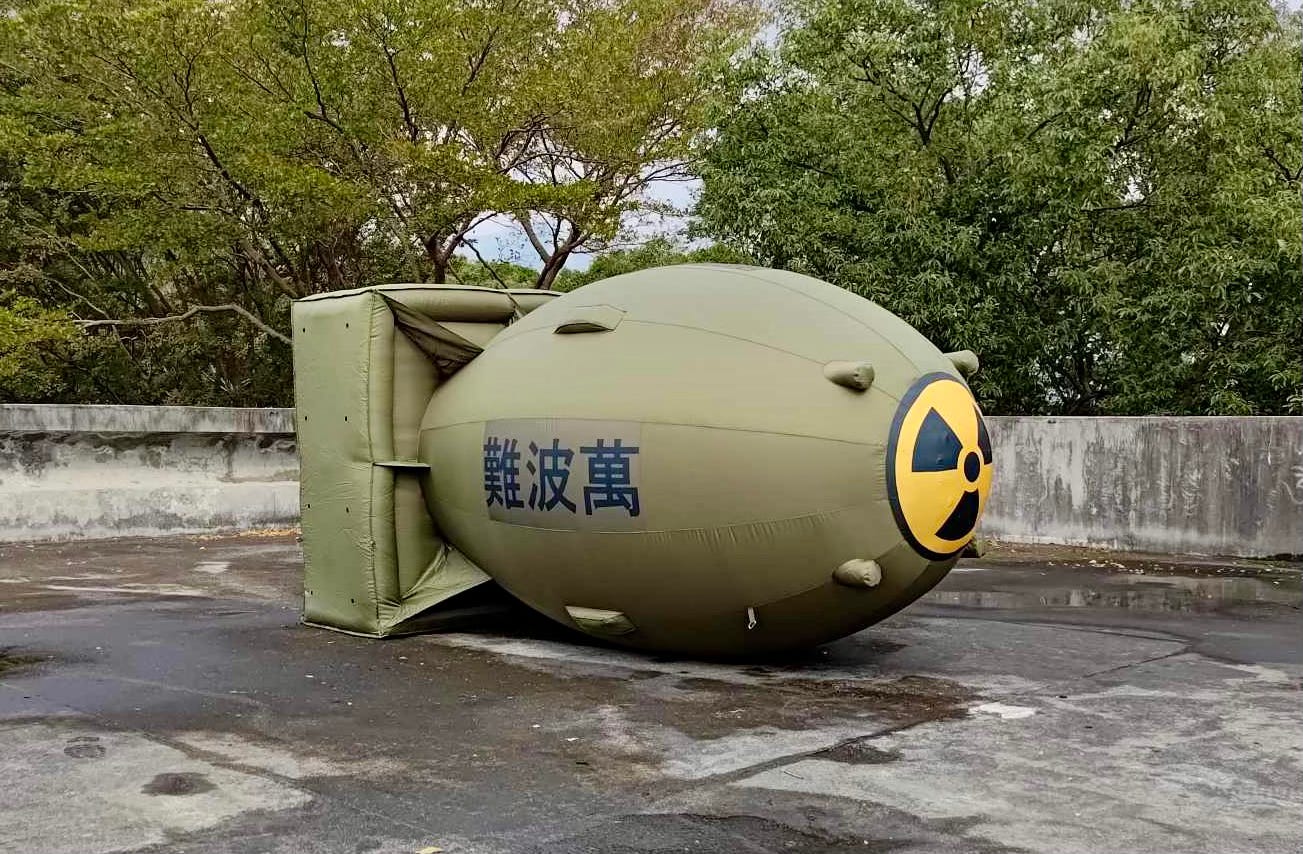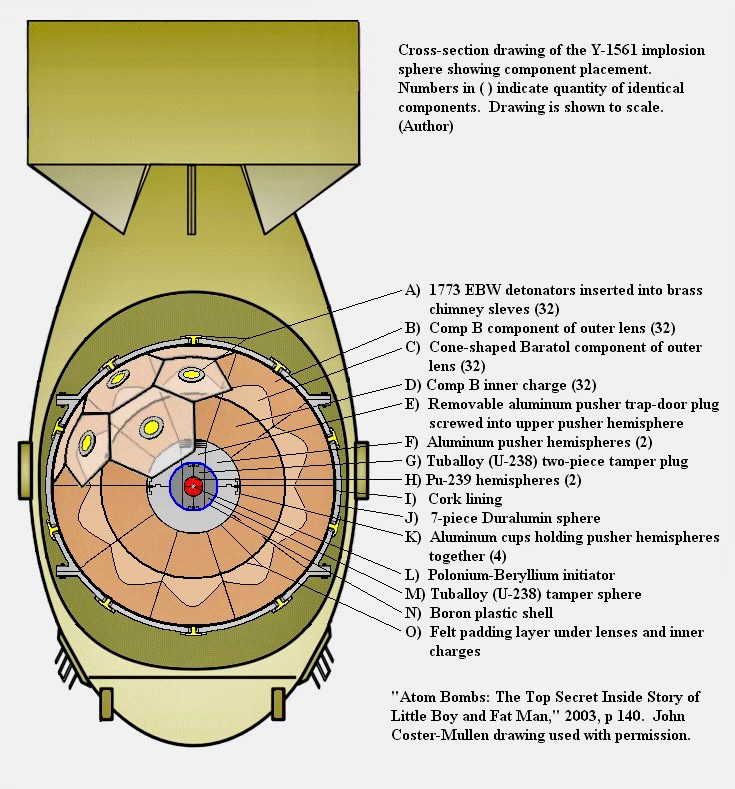China In Arms BOOKSTORE and GIFT SHOP!
Twitter AND YouTube Page
Subscribe: $5 Month/$50 Annual (unable to secure a subscription contact the bank for permission for Stripe deposits).
Paid Subscriptions can choose 2 free books AND if you live in Taipei, a free coffee and a couple hours of conversation.
1 April 2025 (Tuesday)
Taiwan’s First Atomic Bomb; Fear Not China
Secret Photo of “Number One”
By Wendell Minnick (Whiskey Mike) 顏文德
TAIPEI - Taiwan has developed the first “Number One” atomic bomb modeled after the fission “Fat Man” that was dropped on Japan during the Second World War.
The “Fat Man” vaporized Nagasaki on 9 August 1945.
Turning to a fission atomic bomb, rather than the modern fusion nuclear bombs used today, was a genius move by the military’s National Chung-Shan Institute of Science and Technology (NCSIST).
The atomic bombs built during the Manhattan Project used the principle of nuclear fission, but today’s thermonuclear/hydrogen bombs are based on nuclear fusion.
However, the NCSIST source said they only have the “Number One” device at present and if used today it must be delivered by an aircraft due to size/weight.
The "Fat Man" data is readily available on the Internet and was used by the U.S. for seven of the first eight nuclear weapons ever detonated in history.
PLEASE CONSULT VIDEO AT THE BOTTOM OF THIS ARTICLE.
In my opinion, the most practical target is Hong Kong due to poor air defense. To maximize the damage, the bomb would have to detonate directly above Hong Kong’s Victoria Peak at an altitude of roughly 2,000 feet (600 meters). This will allow the explosion to completely destroy the entirety of the island and most of Kowloon (basically knocking out all of China’s military bases along with naval ships in the harbor). Most of the radiation would be carried by the wind safely through the Bashi Channel between Taiwan and the Philippines.
This is only my opinion and not advice, as I do love Hong Kong a great deal having spent my early days in Asia (1990-1993) in Hong Kong. So I have great nostalgia for the former British colony. Not to get too sentimental, but it was where I first read the spy novel set in mid-1970s Hong Kong: The Honourable Schoolboy (1977) by John le Carre (1931-2020) and drank more pints than I can count at the legendary Old China Hand Pub in Wanchai that later closed due to gentrification in 2015.
Excuse my digression.
There is debate still on the aircraft used to deliver a large bomb. Taiwan does not have a bomber aircraft, so there is discussion on using a commercial aircraft modified with a drop cage within the fuselage.
Taiwan’s China Airlines has a variety of potential candidates: Airbus A321neo, A330-300, A350-900, Boeing 737-800, 747-400F, 777-300ER and 777F. If China Airlines refuses to allow the military to modify one of the aircraft, it is possible in my opinion to modify the President’s rarely used Boeing 737-800 or possibly the slower C-130H Hercules four-engine turboprop cargo aircraft, both operated by the Taiwan Air Force.
Taiwan’s previous secret nuclear weapon program was revealed in 1987 when scientist Chang Hsien-yi, who was secretly working for the CIA, defected to the U.S. and disclosed a cache of top-secret documents.
China claims the self-governed island as a breakaway rebel province and has vowed to take it by force one day. Amidst the rising tensions in Cross-Strait relations, especially the Russian invasion of Ukraine in 2022, some contend only nukes can guarantee sovereignty in the face of Chinese aggression.
To learn more about this topic, I recommend this book: Taiwan's Former Nuclear Weapons Program: Nuclear Weapons On-Demand (2018), by David Albright and Andrea Stricker.
National Security Archive provides easy access to documents on the program, including Israel’s and South Africa’s involvement.








Why not smuggle in on a containership?